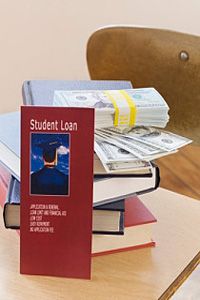Loans. Grants. Work-study programs. Scholarships. Unsubsidized loans. Subsidized loans. What does it all mean? Sometimes it feels as though you need a college degree to figure out how to pay for college in the first place.
Of course, getting accepted to college is exciting. All kinds of possibilities open up, and the future looks bright. Too often, though, that future tends to dim a little when financial reality hits. Figuring out how to pay for tuition, fees, books, room, board and other expenses can be daunting. Scholarships are great, of course, but not everybody wins one. What's more, scholarships often don't cover all the expenses. Getting some form of federal financial aid is often the way to go.
Advertisement
Many people mistakenly think their family income is too high to qualify for any federal student aid. While much federal student aid is determined by need, navigating the maze of rules and regulations often is worthwhile even for students from relatively well-off families. Unsubsidized loans, especially, can be a good deal for students from families that don't qualify as needy.
Fortunately, Congress has long considered helping Americans gain higher education a worthy goal. Each year, federal student aid helps more than 14 million students pay for college, graduate school or trade school [source: U.S Department of Education]. A good number of those students don't fit the traditional picture of poverty.
Federal student aid comes in three forms: grants, work-study and loans.
- Grants: Grants are money given to a student for study at an approved school. Grants do not have to be repaid. The best known federal grants are Pell Grants. Grants go to the students with the greatest financial need.
- Federal Work-Study: The federal work-study program helps students earn money for their education by working part-time jobs. Some jobs are at the student's school. Others are in the community, usually at nonprofits or public agencies. Work-study opportunities are tied to the student's need.
- Federal Student Loans: Federal student loans must be repaid, with interest, like any other loan. They usually have advantages over the loans that students or their families could get without federal help, however. Some federal student loans are tied to financial need; others are not. There are two major types of federal student loans: subsidized loans, which are tied to need, and unsubsidized loans, which aren't need-based.
Sound complicated? It's not as confusing as it might seem. Read on to learn more about the difference between unsubsidized and subsidized student loans.
Advertisement



